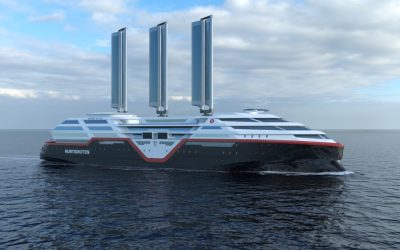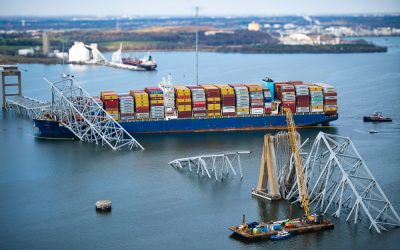CROSS-INDUSTRY TEAM TACKLES METHANE SLIP
Methane is a potent greenhouse gas, estimated to have a global warming potential (GWP) of 27-30 over 100 years, while CO2 has a GWP of 1 regardless of the time period used.
The low-pressure, dual-fuel concept has proved to be the most popular LNG engine technology, but it is also most closely identified with the phenomenon of methane slip, the unburned CH4 that is released into the atmosphere.
Although natural gas currently represents only about 3% of total fuel consumption by the global fleet, and notwithstanding the technological advances that have limited such fugitive emission factors from various engine designs in recent years, methane emissions have grown steeply over the same period. The acceleration in the nomination of LNG dual-fuel installations for newbuilds necessitates ever-closer attention to the issue.
A further, large-scale European collaborative endeavour addressing ways of abating or moderating methane slip was launched during 2022 under the co-ordination of VTT Technical Research Centre in Finland. The five-year, GREEN RAY project is focused on low-pressure, dual-fuel technology in both two-stroke engines and high-powered four-stroke engines.
The 12 research partners provide cross-industry representation, from the shipowning, shipbuilding, fuel supply, marine engineering, and classification sectors together with academia. As the initiative chimes with EU climate ambitions, GREEN RAY has qualified for a grant of nearly €7 million (US$7.6 million) out of the European Commission’s Horizon Europe research and innovation programme, towards the overall budgeted cost of €10.5 million (US$11.4 million).
Technologies development
The consortium has the remit of tackling the problem from multiple angles, by developing three solutions applicable to both existing vessels and newbuilds.
The on-engine solution for two-strokes involves a patented LNG injection system, conceived to significantly cut fugitive emissions from propulsion installations on deep-sea vessels such as tankers and container ships. The parallel four-stroke development aims to reduce slip at all engine loads from wide-bore machinery as used to power cruise vessels, ferries and gas carriers.
The third sphere of investigations entails aftertreatment plant in the shape of a sulphur-resistant catalyst system designed to convert the remaining methane emissions into a less potent GHG. The intention is to achieve an overall reduction of up to 95% in such emissions and ensure that slip is kept below 1g/kWh.
All three developed solutions will be demonstrated at sea, to Technology Readiness Level (TRL) 7, aboard two newbuilds and one existing vessel. TRLs are different points on a scale for estimating the technical maturity or progress of a particular technology during its acquisition or take-up stage.
Technologies and methodologies emanating from GREEN RAY will also be fully capable of utilising bio-methane or synthetic methane, instead of fossil LNG, so as to assist the industry in making the energy transition to “climate neutrality”.
Measuring the scale of emissions
Moreover, the consortium will contribute to climate data collection via the study of methane levels, which will allow for a more global assessment of GHG emissions from LNG marine fuel. The information will be combined with onboard experiments and modelling to provide a more comprehensive overview of the climatic impact of shipping.
Ascertaining the true scale of methane emissions is fraught with difficulties, not least a lack of globally recognised methods or consensus, aggravated by shortcomings in availability of data and suitable tools. Accurate gauging and understanding as to how such emissions can be managed to negligible levels will signal if liquefied bio-methane (LBM) and liquefied synthetic methane (LSM) are viable pathway fuels to help achieve 2050 decarbonisation targets.
The ascription to GREEN RAY not only constitutes a broad church but also one which includes high-profile, expansion-minded members of the shipping community, the technology users. The Swiss-headquartered MSC Group is participating through its London-based company MSC Cruise Management and its fleet maintenance specialist MSC Malta Yard, while the French organisation CMA CGM is enrolled by way of the Marseilles fleet operating arm CMA Ships.
EU funding allocations to the foregoing, however, are minimal (and zero in the case of the UK company). The Wärtsilä Group is the recipient of the largest amount of grant, nearly €3 million (US$3.3 million) going to its Finnish and Italian participants in GREEN RAY, while Shell Global Solutions of the Netherlands has qualified for €1.39 million (US$1.5 million). VTT has been allocated €1.11 million (US$1.2 million), while Chantiers de l’Atlantique – whose Saint-Nazaire workload features a high volume of newbuilds for MSC – has received €0.68 million (US$0.74 million). The project consortium also includes DNV and Ilmatieteen Laitos (Finnish Meteorological Institute).






